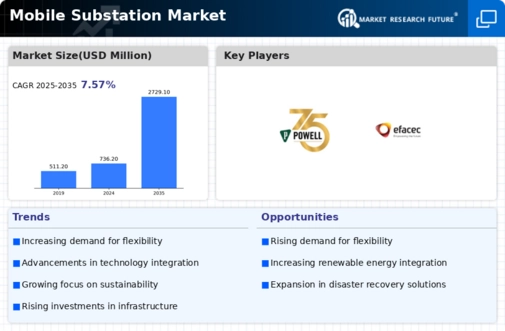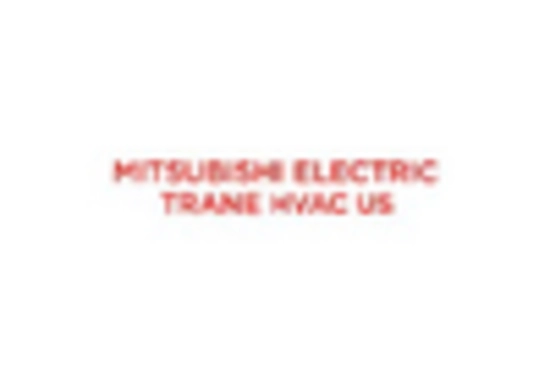-
Executive Summary
-
Scope of the Report
-
Market Definition
-
Scope of the Study
- Definition
- Assumptions
- Limitations
-
2.2.2
-
Research Objective
-
Research
- Primary Research
- Secondary Research
-
Process
-
Market
-
size Estimation
-
Forecast Model
-
Market Landscape
-
Porter’s
- Threat of New Entrants
- Bargaining power
- Threat of substitutes
- Segment rivalry
-
Five Forces Analysis
-
of buyers
-
Value
-
Chain/Supply Chain Analysis
-
Market Dynamics
-
Introduction
-
4.2
-
Market Drivers
-
Market Restraints
-
Market Opportunities
-
4.5
-
Market Trends
-
Global Mobile Substation Market, By Voltage Type
-
5.1
-
Introduction
-
HV
- Market Estimates & Forecast, 2020-2027
- Market Estimates & Forecast by Region, 2020-2027
-
MV
- Market Estimates & Forecast
-
5.3.1
-
Market Estimates & Forecast, 2020-2027
-
by Region, 2020-2027
-
Global Mobile Substation Market, By Mobile Transformer
-
Introduction
-
Power Transformer
- Market Estimates &
- Market Estimates & Forecast by Region, 2020-2027
-
Forecast, 2020-2027
-
Distribution Transformer
- Market Estimates & Forecast, 2020-2027
- Market Estimates & Forecast by Region, 2020-2027
-
Global Mobile
-
Substation Market, By Power Rating
-
Introduction
-
Up to 10MVA
- Market Estimates & Forecast, 2020-2027
- Market Estimates &
-
Forecast by Region, 2020-2027
-
11 MVA-25 MVA
- Market Estimates
- Market Estimates & Forecast by Region,
-
& Forecast, 2020-2027
-
25 MVA-100 MVA
- Market Estimates & Forecast, 2020-2027
- Market Estimates & Forecast by Region, 2020-2027
-
Above 100
- Market Estimates & Forecast, 2020-2027
- Market Estimates
-
MVA
-
& Forecast by Region, 2020-2027
-
Global Mobile Substation Market, By
-
Applications
-
Introduction
-
Energy & Utilities
- Market
- Market Estimates & Forecast by
-
Estimates & Forecast, 2020-2027
-
Region, 2020-2027
-
Infrastructure
- Market Estimates & Forecast,
- Market Estimates & Forecast by Region, 2020-2027
- Market Estimates & Forecast, 2020-2027
- Market
-
8.4
-
Industrial
-
Estimates & Forecast by Region, 2020-2027
-
Others
- Market
- Market Estimates & Forecast by
-
Estimates & Forecast, 2020-2027
-
Region, 2020-2027
-
Global Mobile Substation Market, By Region
-
Introduction
-
North America
- Market Estimates & Forecast, 2020-2027
- Market Estimates
- Market Estimates &
- Market Estimates & Forecast By
- The U.S
- Canada
-
9.2.2
-
Market Estimates & Forecast By Voltage Type, 2020-2027
-
& Forecast By Mobile Transformer, 2020-2027
-
Forecast By Power Rating, 2020-2027
-
Applications, 2020-2027
-
9.2.5.4
-
Market Estimates & Forecast By Power Rating, 2020-2027
-
& Forecast By Applications, 2020-2027
-
Estimates & Forecast, 2020-2027
-
By Voltage Type, 2020-2027
-
Transformer, 2020-2027
-
Europe
- Market Estimates & Forecast, 2020-2027
- Market
- Market Estimates
- Market Estimates &
- Market Estimates & Forecast By
- U.K
- Germany
- France
- Italy
- Rest of Europe
-
Estimates & Forecast By Voltage Type, 2020-2027
-
& Forecast By Mobile Transformer, 2020-2027
-
Forecast By Power Rating, 2020-2027
-
Applications, 2020-2027
-
9.3.5.4
-
Market Estimates & Forecast By Power Rating, 2020-2027
-
& Forecast By Applications, 2020-2027
-
Estimates & Forecast, 2020-2027
-
By Voltage Type, 2020-2027
-
Transformer, 2020-2027
-
9.3.7.2
-
Market Estimates & Forecast By Voltage Type, 2020-2027
-
& Forecast By Mobile Transformer, 2020-2027
-
Forecast By Power Rating, 2020-2027
-
By Applications, 2020-2027
-
Forecast, 2020-2027
-
9.3.9.5
-
Market Estimates & Forecast By Applications, 2020-2027
-
& Forecast By Voltage Type, 2020-2027
-
By Mobile Transformer, 2020-2027
-
Power Rating, 2020-2027
-
Asia Pacific
- Market Estimates & Forecast, 2020-2027
- Market Estimates & Forecast By Voltage Type, 2020-2027
- Market
- Market Estimates
- Market Estimates & Forecast
- China
- Japan
- India
- Rest of Asia Pacific
-
Estimates & Forecast By Mobile Transformer, 2020-2027
-
& Forecast By Power Rating, 2020-2027
-
By Applications, 2020-2027
-
Forecast, 2020-2027
-
9.4.5.5
-
Market Estimates & Forecast By Applications, 2020-2027
-
9.4.6.1
-
Market Estimates & Forecast, 2020-2027
-
By Voltage Type, 2020-2027
-
Transformer, 2020-2027
-
9.4.7.2
-
Market Estimates & Forecast By Voltage Type, 2020-2027
-
& Forecast By Mobile Transformer, 2020-2027
-
Forecast By Power Rating, 2020-2027
-
By Applications, 2020-2027
-
& Forecast, 2020-2027
-
Type, 2020-2027
-
Rest
- Market Estimates & Forecast, 2020-2027
- Market
- Market Estimates
- Market Estimates &
- Market Estimates & Forecast By
-
of the World
-
Estimates & Forecast By Voltage Type, 2020-2027
-
& Forecast By Mobile Transformer, 2020-2027
-
Forecast By Power Rating, 2020-2027
-
Applications, 2020-2027
-
Competitive Landscape
-
Company Profile
-
ABB Ltd. (Switzerland)
- Company Overview
- Products/Services
- Financial Overview
- Key Developments
- SWOT Analysis
-
Offering
-
11.1.5
-
Strategy
-
Siemens AG (Germany)
- Company
- Products/Services Offering
- Financial Overview
- Key Developments
- Strategy
- SWOT Analysis
- Company Overview
- Products/Services
- Financial Overview
- Key Developments
- SWOT Analysis
-
Overview
-
11.3
-
General Electric Company (U.S.)
-
Offering
-
11.3.5
-
Strategy
-
Qingdao TGOOD Electric (China)
- Products/Services Offering
- Financial Overview
- Key Developments
- Strategy
- SWOT Analysis
- Company Overview
- Products/Services
- Financial Overview
- Key Developments
- SWOT Analysis
-
11.4.1
-
Company Overview
-
11.5
-
Elgin Power Solutions (U.S.)
-
Offering
-
11.5.5
-
Strategy
-
Meidensha Corporation (Japan)
- Products/Services Offering
- Financial Overview
- Key Developments
- Strategy
- SWOT Analysis
- Company Overview
- Products/Services
- Financial Overview
- Key Developments
- SWOT Analysis
-
11.6.1
-
Company Overview
-
11.7
-
Matelec Group (Lebanon)
-
Offering
-
11.7.5
-
Strategy
-
Enerset Power Solutions (Texas)
- Company Overview
- Products/Services Offering
- Financial
- Key Developments
- Strategy
- SWOT Analysis
-
Overview
-
EKOSinerji (Turkey)
- Company Overview
- Products/Services
- Financial Overview
- Key Developments
- SWOT Analysis
-
Offering
-
11.9.5
-
Strategy
-
WEG (Brazil)
- Company
- Products/Services Offering
- Financial Overview
- Key Developments
- Strategy
- SWOT Analysis
- Company Overview
- Products/Services
- Financial Overview
- Key Developments
- SWOT Analysis
-
Overview
-
11.11
-
Atlas Electric Inc (U.S.)
-
Offering
-
11.11.5
-
Strategy
-
Delta Star Inc. (U.S.)
- Products/Services Offering
- Financial
- Key Developments
- Strategy
- SWOT Analysis
-
11.12.1
-
Company Overview
-
Overview
-
List of Tables
-
Global Mobile Substation Market: By Region, 2020-2027
-
North America Mobile Substation Market: By Country, 2020-2027
-
Europe Mobile Substation Market: By Country, 2020-2027
-
Asia-Pacific
-
Mobile Substation Market: By Country, 2020-2027
-
RoW Mobile Substation
-
Market: By Country, 2020-2027
-
Global Mobile Substation Market, By
-
Voltage Type, By Regions, 2020-2027
-
North America Mobile Substation
-
Market, By Voltage Type, By Country, 2020-2027
-
Europe Mobile Substation
-
Market, By Mobile Transformer, By Country, 2020-2027
-
Asia-Pacific
-
Mobile Substation Market By Voltage Type, By Country, 2020-2027
-
RoW
-
Mobile Substation Market By Voltage Type, By Country, 2020-2027
-
Global
-
Mobile Substation By Mobile Transformer: By Regions, 2020-2027
-
North
-
America Mobile Substation Market By Mobile Transformer : By Country, 2020-2027
-
Europe Mobile Substation Market By Mobile Transformer : By Country, 2020-2027
-
Asia Pacific Mobile Substation Market By Mobile Transformer : By
-
Country, 2020-2027
-
RoW Mobile Substation Market By Mobile Transformer
-
: By Country, 2020-2027
-
Global Mobile Substation Market, By Power
-
Rating, By Regions, 2020-2027
-
North America Mobile Substation Market,
-
By Power Rating, By Country, 2020-2027
-
Europe Mobile Substation Market,
-
By Power Rating, By Country, 2020-2027
-
Asia Pacific Mobile Substation
-
Market, By Power Rating, By Country, 2020-2027
-
RoW Mobile Substation
-
Market, By Power Rating, By Country, 2020-2027
-
Global Mobile Substation
-
Market, By Applications, By Regions, 2020-2027
-
North America Mobile
-
Substation Market, By Applications, By Country, 2020-2027
-
Europe
-
Mobile Substation Market, By Applications, By Country, 2020-2027
-
Table 24
-
Asia Pacific Mobile Substation Market, By Applications, By Country, 2020-2027
-
RoW Mobile Substation Market, By Applications, By Country, 2020-2027
-
Global Product Market: By Region, 2020-2027
-
Global
-
Material Market: By Region, 2020-2027
-
Global Packaging Type Market:
-
By Region, 2020-2027
-
North America Mobile Substation Market, By Country
-
North America Mobile Substation Market, By Voltage Type
-
Table
-
North America Mobile Substation Market, By Mobile Transformer
-
North
-
America Mobile Substation Market, By Power Rating
-
North America Mobile
-
Substation Market, By Applications
-
Europe: Mobile Substation Market,
-
By Country
-
Europe: Mobile Substation Market, By Voltage Type
-
Table
-
Europe: Mobile Substation Market, By Mobile Transformer
-
Europe:
-
Mobile Substation Market, By Power Rating
-
Europe: Mobile Substation
-
Market, By Applications
-
Asia-Pacific: Mobile Substation Market, By
-
Country
-
Asia-Pacific: Mobile Substation Market, By Voltage Type
-
Asia-Pacific: Mobile Substation Market, By Power Rating
-
Table 42
-
Asia-Pacific: Mobile Substation Market, By Mobile Transformer
-
Asia-Pacific:
-
Mobile Substation Market, By Applications
-
RoW: Mobile Substation Market,
-
By Region
-
RoW Mobile Substation Market, By Voltage Type
-
Table
-
RoW Mobile Substation Market, By Mobile Transformer
-
RoW Mobile
-
Substation Market, By Power Rating
-
RoW Mobile Substation Market, By
-
Applications
-
List of Figures
-
RESEARCH PROCESS OF MRFR
-
TOP DOWN & BOTTOM UP APPROACH
-
Market Dynamics
-
FIGURE
-
impact analysis: market drivers
-
impact analysis: market restraints
-
porter’s five forces analysis
-
Value chain analysis
-
GLOBAL Mobile Substation MARKET SHARE, By Voltage Type, 2020 (%)
-
FIGURE
-
GLOBAL Mobile Substation MARKET, By Voltage Type, 2020-2027 (USD MILLION)
-
FIGURE
-
GLOBAL Mobile Substation MARKET SHARE, By Power Rating, 2020 (%)
-
FIGURE
-
GLOBAL Mobile Substation MARKET, By Power Rating, 2020-2027 (USD MILLION)
-
GLOBAL Mobile Substation MARKET SHARE, By Mobile Transformer, 2020 (%)
-
GLOBAL Mobile Substation MARKET, By Mobile Transformer, 2020-2027 (USD
-
MILLION)
-
GLOBAL Mobile Substation MARKET SHARE, By Applications,
-
GLOBAL Mobile Substation MARKET, By Applications, 2020-2027
-
(USD MILLION)
-
GLOBAL Mobile Substation MARKET SHARE (%), BY REGION,
-
GLOBAL Mobile Substation MARKET, BY REGION, 2020-2027 (USD MILLION)
-
North America Mobile Substation MARKET SHARE (%), 2020
-
FIGURE 19
-
North America Mobile Substation MARKET BY Country, 2020-2027 (USD MILLION)
-
FIGURE
-
Europe Mobile Substation MARKET SHARE (%), 2020
-
Europe Mobile
-
Substation MARKET BY Country, 2020-2027 (USD MILLION)
-
Asia-Pacific
-
Mobile Substation MARKET SHARE (%), 2020
-
Asia-Pacific Mobile Substation
-
MARKET BY Country, 2020-2027 (USD MILLION)
-
Rest of the World Mobile
-
Substation MARKET SHARE (%), 2020
-
Rest of the World Mobile Substation
-
MARKET BY Country, 2020-2027 (USD MILLION)









Leave a Comment